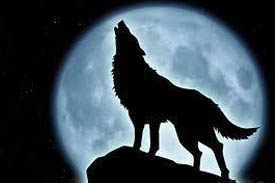Rifles: A real firearm, Part 1
 This article is directed to moving up to a real formidable weapon for hunting. I do not want to address modern military “rifles”, nor their intended application. It is quite legal in this state to kill wildlife with deer and bear being the ultimate game; hopefully I would think for food.
This article is directed to moving up to a real formidable weapon for hunting. I do not want to address modern military “rifles”, nor their intended application. It is quite legal in this state to kill wildlife with deer and bear being the ultimate game; hopefully I would think for food.
Each state has complex rules about hunting. For Virginia, rules, fees etc. Go to HuntFishVa.com . Copies of this publication are now in the sporting areas of Wal*Mart™, gun shops, and other fine stores.
If you come right down to it you need only one shot to down your game. Up, and through the 1920’s, where even High Schools had rifle shooting clubs, most noteworthy was the county-state and national matches where the ultimate marksman fired a single shot rifle, often at 1000 yards doing “hole in one” repeats.
The advantage of a single shot rifle is that there is no “slop” in the action, it is a precision fit, and with precision ammunition- not the out of date military junk sold on line- good eyesight and a quality scope, you are in the League of Shepherds© protecting their flock.
Let me point out at this time that a true “shootist”, not just a shooter, but a man, or woman who owns such a fine piece of weaponry will use it for intended survivability and not be blazing away at the pine cones.
Brief Historical Review
In the late 1800s, in Austria-Germany there evolved a bolt-action repeater for multiple rapid firing at enemy troops. Of course we had to follow suit in the escalating equality of warfare. Our own famous bolt action repeater1903 Springfield was born and kept in use- in part through WWII. Various foreign countries bought Krupp’s Mauser action bolt-action repeater rifles, and they were made in varying calibers to suit the munitions orders.
From Krupp’s and Springfield there developed military cartridges that were common, cheaply available and were fitted into the scheme of modern hunting big and small game. It is understandable that military rifle led to civilian application. It would appear that the British were the only double barrel rifle manufacturers who built specialty firearms for hunting, mostly of African big dangerous game, although the Germans built some nice three-barrel “Drillings”.
The semi-automatic rifle came into being actually at the close of WWI with modifications to the 1903 Springfield, but the war was over, and until Garand designed and manufactured the MI Garand semi-automatic in the late 1930’s, most everybody used bolt-action repeaters. It was not until the closing days of 1944 that Germany had produced their own semi-automatic rifle, albeit too late for influencing the battlefields.
Korea was an object lesson in that our semi-automatic Garand M1 was inadequate in firepower to stop the massive “hoards” of Chinese volunteers, nor was the Browning Machine guns sufficient in rate of fire power to stay a defensive position.
So this was a step towards the old 30.06 round, (from the 1903 Springfield days), shortened to a .308 round for use in the M60 machine gun, and the new M14 foot solders rifle-both capable of full automatic firepower.
The only difference in the 30.06 round and the .308 round is the length of the powder can, hence the. 308, being shorter loses in range vs.: the 30.06, but it cycles faster in full automatic fire. This was the goal of the military at that time, although the loss of ranging capability was a major argument at that time in our mini-historical review.
By the time the Viet Nam era unfolded the average South Vietnam Soldier was shorter than the M1 Garand and the M14 rifle. They were too big and clumsy for them to handle so we mass produced the M16, a semi automatic-full automatic clone of the Armalite M15 defensive Carbine pushed by General Curtis LeMays for issuance to the USAF. Needless to say the ultra high velocity .223(5.56mm) bullet was small, lethal and just right for the small Viet Nam soldier, and of course at that time the concept of winning through massive firepower appealed to the military mind at the time.
The M16, the “Black Rifle”, as it was called was, and has been modified and copied by numerous manufacturers over the years and remains the foremost quasi-Para military carbine available even to date-used by military, police and anybody who can pay the average $2000.00 price tag for a semi-automatic function.
Currently the US Army is experimenting with new rifle designs of hyper velocity and will be in the future, making entry into the “varmint shooting” side of civilian weapons. As we can visualize, the military side of firearm industrial production influences civilian purchasing/manufacturing.
Introduction to Ballistic Influence
The single shot rifle, usually a barrel length of 26” evolved from the old black powder/US Military civil war days and functionally has little change since. Civil war snipers, called sharpshooters, did wreck havoc in those years at 1000 yards range, and were often placed in hot air balloons to gain a “line of sight” to their targets. Actually the Civil War technology was quite superior for those years, it was the incredible incompetence and archaic tactical employments of the foot soldiers that caused such frightful personnel losses.
Barrel length is important in the consideration of powder type and composition for a burn time down the length of the barrel to effect sufficient pressure to propel a bullet at optimum velocity. Black powder burns faster than smokeless powder and hence you would expect longer barrels to build up necessary pressure. Modern propellants- they vary of course- can achieve optimum performance in a shorter barrel.
The term “rifle” in the older days referred to a weapon that internally had by machining, a spiral grove of “lands and grooves” the length of the barrel. Short barrels were referred to as carbines and longer barreled weapons were simply called” rifles”. Muskets, as an example in pre-civil war days were smooth bores. You will still see that designation on occasion today.
A “land” inside a gun barrel is the raised portion and the depressed surface is the “grove” The spiraling of this land and grove machining is what stabilizes the bullet (projectile) in flight. What is important to understand with modern gun smokeless powders is that the rate of “twist”, measured in inches down the length of the gun barrel aids or detracts on stability in flight related to the weight of the bullet. For example the original Black Rifle civilian/military AR-15/M-16 had a twist applicable to the 55-grain weight bullet, the military found that a heavier weight bullet was desired and the twist of the rifleing was made tighter. This may be seen in a number sequence of a 1 in 12 twist or a 1 in 10 twist, the shorter creating more rotation and better accuracy a heavier bullet. You must know the rate of twist when you buy your rifle, and if you do not, you can contact the manufacturer giving the serial number of the weapon. They will respond.
Now assuming that your new rifle twist is determined you can choose with better predictability your box of test bullets for alignment of the sights, which we will discuss later in this series.
Purchasing a Used Rifle
When purchasing a used rifle, and most of us will choose a used firearm because it is less expensive, it is imperative to find one with a “button” rifle bore end. This recessed area maintains the crisp rifling edge so that bore ballistic dynamics are not causing any distortion. The slightest scratch, chip or other visible imperfection at the muzzle is a junk rifle. A recessed button rifle helps save you from that potential damage. Interestingly, improper cleaning rods, and substance strata at the bore opening cause the most damage to a rifle.
When examining the rifle purchase you will need to open the receiver end. In a single shot you can usually “break open” the rifle in three parts: barrel group, fore stock, and lastly the receiver stock group. This makes cleaning very easy. A bolt action will require you to remove the bolt- a simple built in mechanism that allows the bolt to slide out. Semi-Automatics will require removing the magazine clip and retracting the bolt and locking it in the open position. Your seller will show you how.
You will need to have a small flashlight to shine into the barrel bore at both ends so you can inspect the breech of the barrel where the entire bullet will seat. You will look for chips and cracks. You will look for “throat erosion”. This is where a highly fired rifle will have burned out the throat of the bore seat-where the lands and groves start- and indicate a new rifle barrel may be needed. Most usually a gunsmith with a micrometer instrument is necessary to determine how damaged the bore is from excessive use.
Note that it takes about 200 rounds of firing to ”break in” a new rifle barrel before you can achieve optimum accuracy. In addition note that a modern gun barrel will fire from 35,000 to 50,000 rounds before it needs replacement. Also in this regard you must determine if the former owner was a target shootist, and if he was, was he a hand loader of ammunition? This is your warning flag if he spends his life on the range.
In my experience I have noted most of the rifles sold usually have less than the 200 rounds necessary for “smoothing the bore”. Again, look down the barrel. Most barrel damage is from improper cleaning and excessive brushing. The spiral bore should be free of scratches, chips and wear signs. A dark, dusty bore needs but a good cleaning.
Next week we will continue with our series on rifles. While we are waiting take a peek at, TCArms.com also Ruger who make top of the line single shot rifles and other actions we will be talking about. Browning has an excellent 100-year-old design called the Hi-wall and Lo-wall, which were original designs of John Browning. I do not recommend New England Arms, as it is risky for high-pressure loads in their firearms. SavageArms.com offers an under and over rifle/shotgun which I have a special interest in, and find their arms exceedingly accurate. Catalogs are available through these on line stores and offer the reader time to study the wares.
The lead in picture is Annie Oakley-famed “Little Miss Sure Shot”- of Buffalo Bill’s Wild West show. A biography: “Shooting Star” may be ordered from www.Amazon.com book section. Her single shot rifle may be seen at the Naional Firearms Museum
God Bless
COPYRIGHT: 2009, Back2theLand.com, Mark Steel



